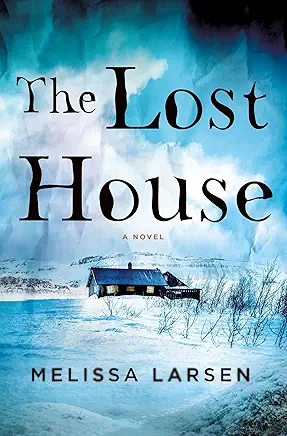Award-winning book critic Oline Cogdill recently reviewed Melissa Larsen’s thriller, The Lost House, which was released just a couple weeks ago. You can order a copy of The Lost House through the Webstore. https://bit.ly/3QaqheJ. Thank you, Oline, for sharing your review from the South Florida Sun Sentinel.
“The Lost House” is filled with strong characters that author Melissa Larsen has carefully sculpted. (Emily Hlavá? Green/Courtesy)
‘The Lost House’ by Melissa Larsen. Minotaur, 352 pages, $28
Questions of identity — who we are, where we came from, what we will be — have long been a fundamental part of mystery fiction. To solve a mystery, the sleuth must discover more about themselves, as does the young woman at the center of the atmospheric “The Lost House.”
Software developer Agnes Glin has had an emotionally remote relationship with her father, Magnus, since she was a child. But she was close to her supportive and loving grandfather, Einar Palsson, who recently died. She has a difficult time believing her sweet grandfather was accused 40 years ago of murdering his young wife and infant daughter in his native Iceland. Although never charged, Einar, a university professor, fled from Bifröst to California with Magnus, then 9 years old, to escape the rampant rumors and being ostracized by his neighbors.
Despite Magnus’ vehement objections, Agnes accepts an invitation from true crime podcaster Nora Carver to travel to Bifröst to discuss the murders on the anniversary. After four decades, Einar remains the prime suspect — the case’s notoriety still fresh to many residents with long memories. Agnes hopes to prove her grandfather innocent, though Nora warns her that might not be the “truth” they uncover.
Agnes’ arrival coincides with the disappearance of another young woman, who is the same age as her grandmother was at the time of the murder.
Larsen infuses “The Lost House” with a vivid look at Iceland so chilling one can almost feel the cold wind. Iceland’s unusual landscape emerges as a character itself. Agnes finds the wide open spaces a bit disconcerting but somehow forges closer relationships: “… so much space here, but there is nowhere to hide,” Agnes says. “Nowhere to go but to each other.”
“The Lost House” is filled with strong characters that Larsen has carefully sculpted, beginning with Agnes. A severe injury forced Agnes to quit her job and move back in with her father. Her “broken life” is comprised of many disappointments, including a breakup with her girlfriend, the loss of her grandfather and the contentious relationship with her father.
More than one character wonder who they would have become if they had lived in a different area. Larsen deftly makes “The Lost House” a succinct story of families, their secrets and the interest in true crime.


